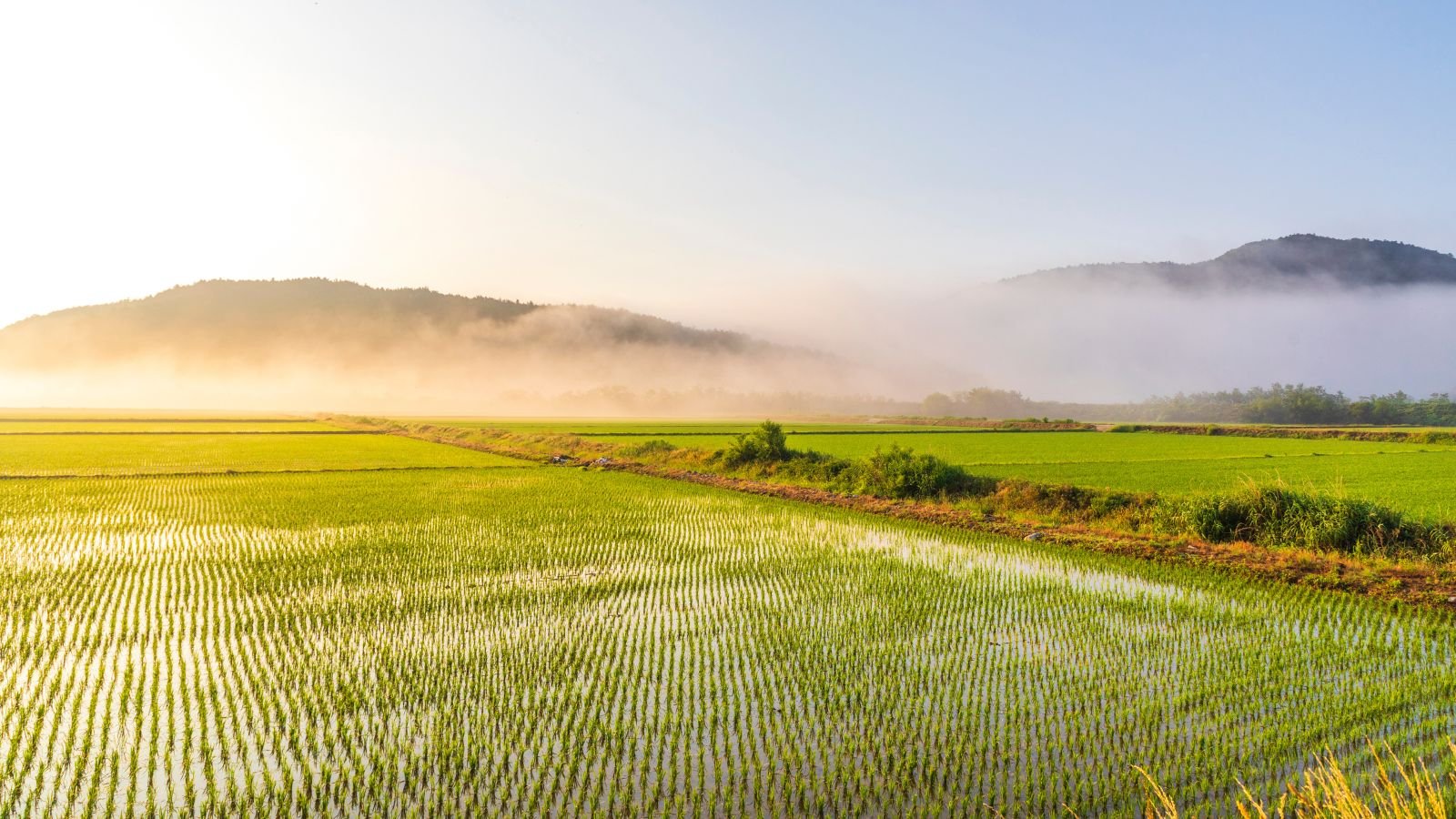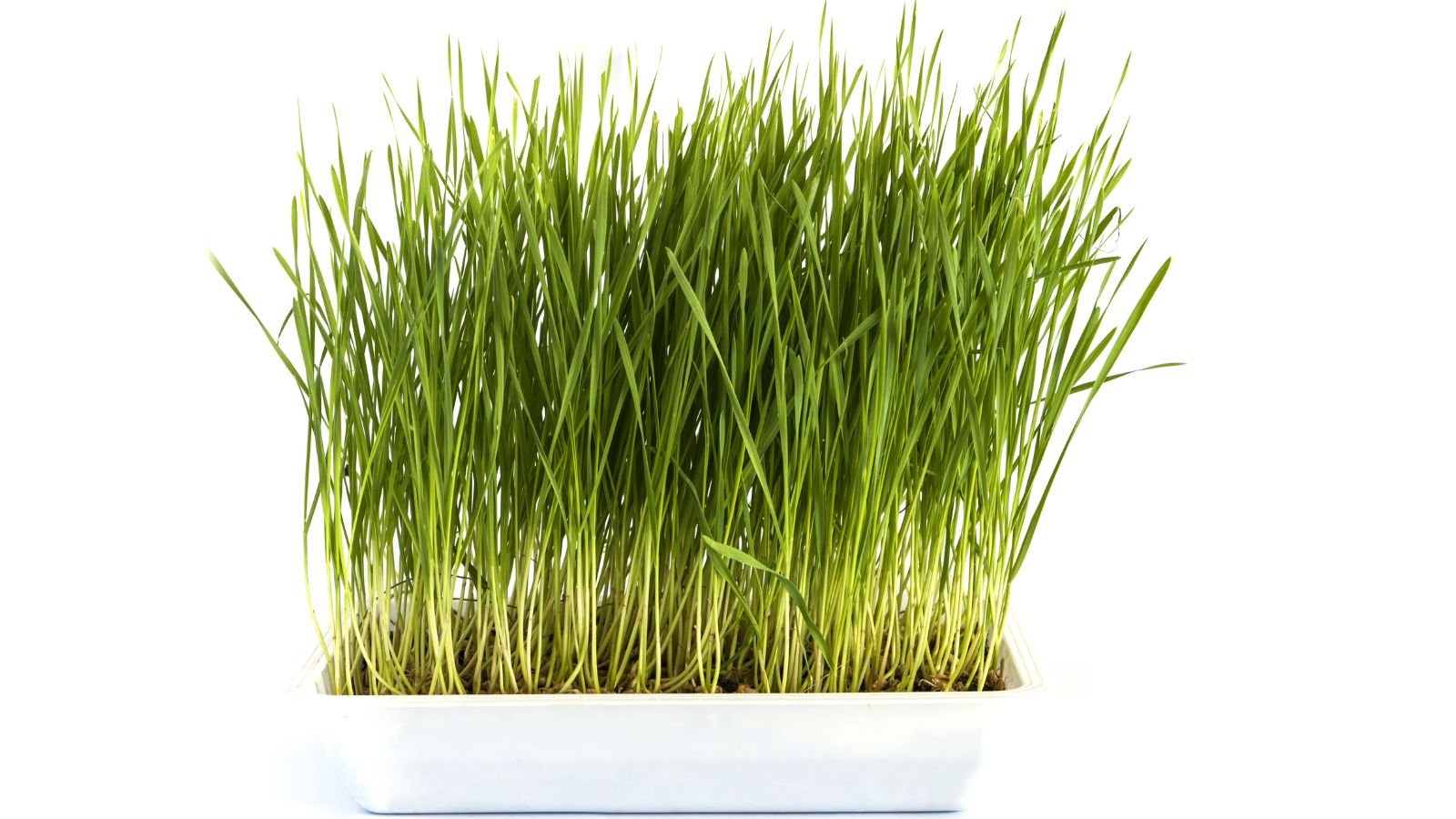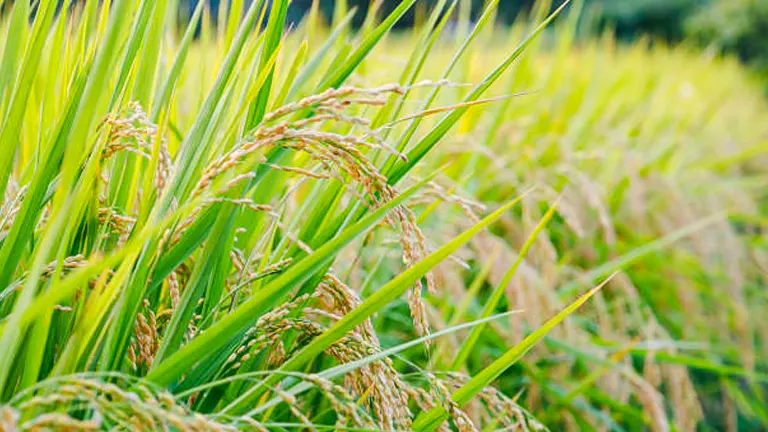Ever thought about growing rice? You might not need a flooded paddy to do it. Gardening expert Sarah Jay shares everything you need to know about cultivating rice at home.
Most people assume rice only grows in flooded paddies. But did you know there’s a way to grow it without turning your backyard into a swamp?
Upland rice thrives as long as it gets the right soil and enough water. With proper moisture, the correct seeds, and good timing, you’ll be harvesting rice in no time.
Whether you choose upland or lowland varieties, growing rice from seed is a rewarding experience.
Overview
Plant Type: Annual semi-aquatic grass
Family: Poaceae
Genus: Oryza
Species: Oryza sativa
Native Area: China
Exposure: Full sun
Height: 4’
Watering Requirements: High
Pests & Diseases: Termites, rice water weevils, stem borers, grasshoppers, beetles, leafhoppers, sheath blight, blast, straighthead, kernel smut, false smut, bacterial panicle blight
Maintenance: Low
Soil Type: Rich, fertile
Hardiness Zone: 10-12
What is Rice?
Rice (Oryza sativa) belongs to the grass family.
A staple in cuisines worldwide, rice comes in thousands of cultivars. You’ll find white, long-grain, and brown rice in every grocery store. However, mass-produced rice often contains pesticides, and organic brown rice can be pricey.
Grains are hulled from tillers, collected, and steamed into delicious dishes. White rice is a dietary cornerstone in many cultures, believed to have been first cultivated along China’s Yangtze River.
Characteristics

Saplings of the Oryza sativa look like blades growing from the soil.
The rice life cycle has multiple stages. It begins with germination, where seeds sprout into seedlings. Next comes the vegetative stage, where tillers (main stems) develop. A mature plant may have 3–12 tillers, with more in poorer soil—though these produce uneven panicles.
Rice changes from green to gold as it matures. Flowers cluster at the top of tillers, varying in color by species. After blooming, seed heads (panicles) emerge and arch over the stems.
You might grow rice for eating or even ornamental purposes. Some varieties, like black rice, are considered ornamental. When selecting seeds, pick one that fits your needs—with so many types, planning ensures the best yield.
Cultivars
Before choosing seeds, understand the basic rice types:
- Long-grain rice has less starch, making it drier—ideal for pilafs or Indian dishes.
- Short-grain rice is stickier, perfect for sushi.
- Brown rice comes in both long and short-grain varieties.
Lowland Rice

This variety thrive in paddies with around two inches of water for weed control.
‘Koshikari’ is a lowland short-grain rice from Japan, great for sushi. It thrives in marshy wetlands but can also grow in 5-gallon buckets (no drainage needed).
Highland Rice

Highland varieties don’t need flooding but grow well with abundant water.
‘Duborskian’, a Russian short-grain variety, prefers drier climates but needs moist soil and 10-inch spacing. Its panicles shift from green to gold, with some grains turning light brown.
Long-Grain Rice

Long-grain varieties are most common globally.
‘Blue Bonnet’, a Mayan variety from Belize, grows well in regular soil. ‘Carolina Gold’, another long-grain type, prefers flooded conditions—try a kiddie pool for cultivation.
Ornamental Rice

Some varieties have unique colors that also look great in a garden.
‘Black Madras’ is perfect for gardeners wanting beauty over high yields. This wetland variety has purple blades and black panicles, attracting waterfowl and supporting local ecosystems.
Planting

The Oryza sativa is sensitive to the cold and can grow in containers.
Rice has a long growth period but a short harvest window (about 4 weeks). Most varieties need warmth, so plant after the last frost in early spring. Choose a sunny spot with rich, well-draining soil—or use containers.
Start seeds indoors 6–8 weeks before planting. Transplant seedlings 8 inches apart in rows.
For containers:
- Upland rice does well in large planters with moist soil.
- Lowland rice thrives in 5-gallon buckets (no drainage) with soil at the bottom and standing water above.
How to Grow
With 2–4 inches of standing water weekly, rice is fairly low-maintenance.
Light
Rice needs 6–8 hours of sun daily. Less light reduces yield.
Water
- Lowland rice requires regular flooding (2–6 inches of water for plants over 6 inches tall).
- Upland rice needs 1 inch of water weekly. Drip irrigation boosts yield and nutrient uptake.
Soil
Rice grows in varied soils, making it a global staple.
- Lowland varieties prefer fertile soil or loamy clay with flooding.
- Upland varieties thrive in compost-amended soil but tolerate poor soil with proper irrigation.
- pH range: 3.5–8.5 (lowland prefers slightly acidic; upland prefers neutral).
Temperature
- Lowland rice: Zones 9a–10b; handles cool temps (50°F/10°C) but struggles above 85°F (29°C).
- Upland rice: Zones 4a–10b; ideal range is 55°F–80°F (13–27°C).
Both dislike frost. Use frost cloth for cold snaps and shade cloth in extreme heat.
Fertilizing
Rice thrives on nitrogen (ammonia-based fertilizers like urea work well). Prep soil with potassium and phosphorus before planting. Top-dress with nitrogen when panicles form.
For lowland rice, let soil dry for 10 days before fertilizing, then flood to slow nitrogen loss.
Maintenance
Avoid pruning until harvest—removing dead leaves harms growth. After threshing, clear leftover foliage. Rice is an annual crop.
Propagation
Grow rice from unprocessed seeds with hulls. Scatter seeds post-frost, cover with compost, and flood if needed.
For containers: Fill with 4 inches of compost-amended soil, sow seeds, and move to sun once seedlings establish.
Harvesting
When panicles turn gold, cut stalks near the ground. Dry them for 2 weeks.
For large harvests, spread grains between tarps and trample to remove hulls. For small batches, pound them on a countertop or in a bag.
Winnow by pouring grains over a cookie sheet with a fan—hull residue blows away.
Freshly harvested rice is brown; polishing removes the outer coating for white rice.
Storage
Select healthy grains to prevent spoilage. Store in airtight containers (like mason jars) for long shelf life.
Common Problems
Issues often appear at harvest. For lowland rice, check daily for fungal diseases.
Irregular Growth

They can grow irregularly if water levels are uneven.
Uneven water levels cause uneven panicles. Bucket planting ensures consistency.
Fluctuating Temperatures

Shifting temperatures can also affect seed production.
Extreme heat or cold affects seed production. Use shade or frost cloth as needed.
Pests

The Oryza sativa is vulnerable to various insects.
- Termites & rice water weevils attack roots—pyrethrin helps.
- Fall armyworms & stem borers (moth larvae) respond to Bacillus thuringiensis (Bt), pyrethrin, or spinosad.
- Leafhoppers & grasshoppers can be controlled with insecticidal soap or Bt.
Natural control: Ducks or fish in paddies eat pests.
Diseases
Sheath Blight

Sheath blight can appear on the stalks.
Caused by Rhizoctonia solani, it creates oval lesions on stalks. Prevent with resistant seeds or treat with copper fungicide.
Rice Blast

The warm and moist environment is ideal for fungal infections to develop.
Pyricularia grisea thrives in warm, wet weather, rotting stalks and panicles. Treat with copper fungicide.
Straighthead Disease
Occurs when panicles don’t fruit properly (often due to arsenic in water). Rotate crops or dry paddies between seasons.
False Smut

This disease can cause severe tissue damage.
Ustilaginoidea virens forms brown balls on tillers. Remove them and apply copper fungicide.
Kernel Smut
Caused by fungal spores, it leads to discolored grains. No early detection—rotate crops to prevent.
Bacterial Panicle Blight

Discoloration of grains is a sign of this disease.
Causes deformed, discolored grains. Only visible at harvest. Grow resistant strains to avoid.

